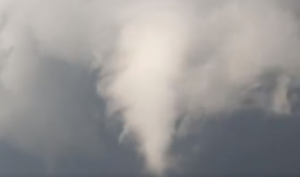With temperatures predicted to rise to 46°C in some northern parts of India, climate experts have warned that the early onset of scorching heat can be particularly dangerous, and such extreme temperatures are forecasted to occur once every four years.
A recent analysis conducted by Imperial College London’s Dr. Mariam Zachariah and Friederike Otto has deduced that the heatwave that began earlier this month is not a rare occurrence, but rather, a common result of higher global temperature levels caused by modern-day activities.
“The recent high temperatures in India were made more likely by climate change. Before human activities increased global temperatures, we would have seen the heat that hit India earlier this month around once in 50 years,” Zachariah said.
Friederike Otto, a Senior Lecturer Friederike at the college added- “India’s current heatwave has been made hotter by climate change that is the result of human activities like burning coal and other fossil fuels.”
“This is now the case for every heatwave, everywhere in the world. Until net greenhouse gas emissions end, heatwaves in India and elsewhere will continue to become hotter and more dangerous,” Otto warned.
Also Read: Summer meals that can help you combat the heat and remain healthy
The recent temperatures recorded in India and Pakistan are largely similar to the ones that were observed in May-June 2015. While the New Delhi airport recorded 44.6°C in 2015, the highest temperature was seen in Odisha- 49.4°C.
Similarly, in Pakistan, Karachi recorded 45°C and other provinces touched the 49°C mark. The deadly heatwave killed about 4,500 people in 2015.
Also Read: Australia’s Great Barrier Reef threatened by severe marine heatwaves: Report
As temperatures soar, health experts have started urging authorities to implement measures.
Dileep Mavalankar, Director with the Indian Institute of Public Health Gandhinagar, told people to follow essential tips.
“People need to watch out for these advisories, stay indoors, keep themselves hydrated and rush to the nearest health centre if they feel moderate signs of heat-related illness. There’s a special need to monitor the old and vulnerable, just like we did during COVID as they can develop heat strokes even when sitting at home,” Mavalankar said, according to a report by TOI.







